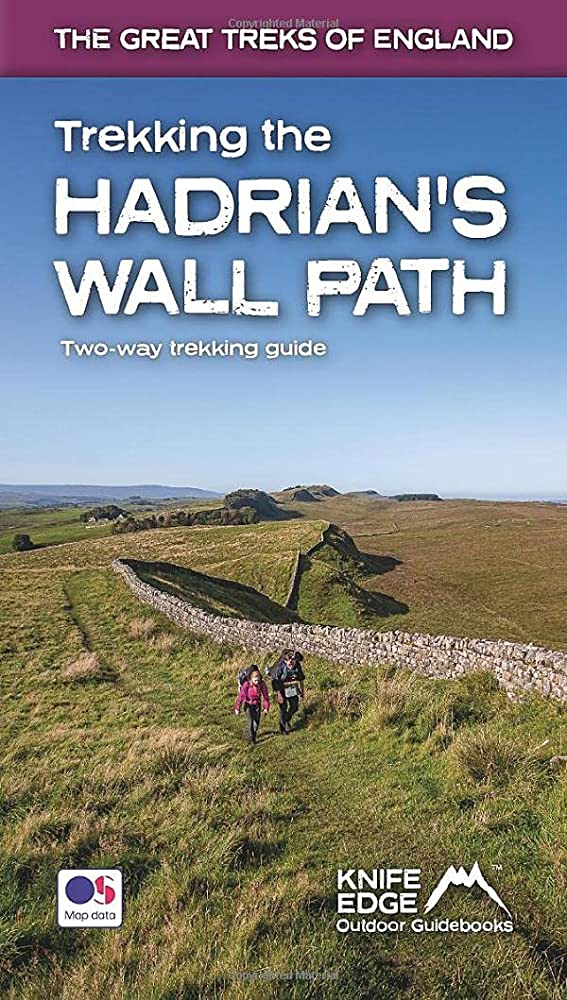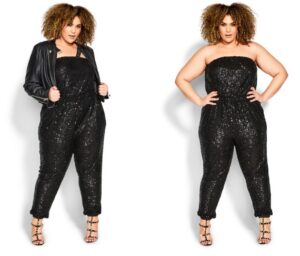For summer hiking, wear breathable clothing and sturdy shoes with good traction. When hitting the trails in the summertime, it’s important to dress for the heat while still being prepared for the terrain.
Opt for lightweight and moisture-wicking clothing, such as synthetic or merino wool shirts and shorts, to keep cool and dry. Choose shoes with good traction and support, such as hiking boots or trail runners, to prevent slips and protect your feet.
Don’t forget a hat, sunscreen, and plenty of water to stay sun-safe and hydrated. By dressing appropriately, you can enjoy a comfortable and safe summer hike.

Credit: issuu.com
Comfortable Clothing
Summer is a great time to get outside and explore nature with hiking being one of the most popular activities. However, choosing the right clothing for hiking is essential for a comfortable and enjoyable experience. In this blog post, we will discuss the importance of comfortable clothing when hiking, the best materials for hiking clothes in summer, and the types of tops and bottoms that are best suited for hiking.
Importance Of Comfortable Clothing When Hiking
Hiking can be a strenuous activity, and uncomfortable clothing can make it even more challenging. Choosing comfortable clothing is crucial as it can impact your performance, enjoyment and safety while hiking. Here are some reasons why:
- Comfortable clothing won’t restrict your movement, allowing you to hike with ease.
- The right clothing will keep you cool and dry, reducing sweat and discomfort on long hikes.
- Wearing layers is important for managing your body temperature, keeping you warm when it’s cold and allowing you to cool down by removing layers when it’s hot.
- Proper clothing can also help protect you from the sun, insects, and other outdoor elements.
Best Materials For Hiking Clothes In Summer
Choosing the proper material for your hiking clothes is essential in summer when temperatures are high. The right materials can help you stay cool, dry, and comfortable during your hike. Here are some of the best materials to look for when purchasing hiking clothes for summer:
- Synthetic fabrics such as polyester and nylon are excellent for wicking away moisture and keeping you dry. These materials are also lightweight, fast-drying and breathable, making them perfect for hot weather.
- Merino wool is a natural material that is temperature regulating. It can regulate your body temperature in both hot and cold weather while also wicking away moisture, making it a great choice for summer hikes.
- Cotton should be avoided for hiking as it absorbs sweat and holds onto moisture, leaving you feeling damp and uncomfortable.
What Types Of Tops And Bottoms Are Suited For Hiking
Choosing the right hiking clothing kit includes selecting the right type of tops and bottoms suited for hiking. The clothing should be comfortable and of the right fit so that it will not interfere with your movements.
Tops:
- A lightweight, breathable, and moisture-wicking t-shirt is ideal for hot weather.
- A long sleeve shirt is also a great option as it can protect your arms and keep you cool in the sun.
- Wearing a base layer (moisture-wicking) and a top layer (like a windbreaker) on top of that can help regulate your body temperature on cold early mornings or summits that get chilly.
Bottoms:
- Lightweight shorts made from synthetic materials are one of the best options for hiking in hot weather, as they will keep you cool and dry.
- Convertible pants with zip-off legs are great for hiking. The legs can be zipped off when temperatures rise, and then back on when it starts to cool down.
Having suitable and comfortable clothing for hiking is important for a comfortable and safe experience. When shopping for hiking clothes, look for synthetic fabrics or merino wool, avoid cotton, and choose appropriate tops and bottoms for the weather and terrain you will be hiking on.
Footwear
Choosing The Right Shoe For Hiking
When it comes to hiking, your footwear is one of the most important things to get right. It can determine how comfortable you feel on your journey and can even play a role in preventing injuries. Here are some key points to keep in mind when choosing the perfect hiking shoe:
- Choose a shoe that is the right fit for your foot. It should feel snug but not tight, with enough room for your toes to wiggle.
- Look for a shoe with good ankle support to reduce the risk of sprains.
- Opt for a shoe with a sturdy sole that will provide good traction on various terrains.
- Consider the type of hiking you will be doing. Different types of hiking require different types of footwear. For example, if you will be hiking in rocky terrain, a shoe with a rubber toe cap will offer more protection.
Benefits Of Hiking-Specific Footwear
Hiking-specific footwear offers several advantages that regular shoes do not. Here are a few benefits to consider:
- Durability: Hiking shoes are specifically designed to withstand the wear and tear of outdoor activities. They are made with materials that can endure the elements and rough terrain.
- Comfort: Hiking shoes have features that provide comfort during long hikes, such as cushioned soles and breathable materials.
- Protection: Hiking shoes are designed to protect your feet from the elements, rocks, and other obstacles on the trail.
- Traction: Many hiking shoes have soles that provide excellent traction, which is essential when hiking on slippery or steep terrain.
How To Break In Shoes Before Going On A Hike
New shoes can be uncomfortable and cause blisters if not broken in properly. Here are some tips for breaking in your hiking shoes:
- Wear your shoes around the house before going on a long hike. This will help your feet adjust to the shoes and stretch them out a bit.
- Take your shoes on a short hike before tackling a long trail. This will allow your feet to get used to the shoes and help you identify any issues before they become major problems.
- Use moleskin or blister plasters to prevent blisters from forming on your feet.
- Gradually increase the length and difficulty of your hikes to give your shoes a proper break-in period.
By following these tips and choosing the right hiking-specific footwear, you can help ensure a comfortable and enjoyable hiking experience. Happy trails!
Sun Protection
The Importance Of Sun Protection When Hiking
When hitting the trails during the summer months, sun protection should be at the top of your list. Why? Prolonged exposure to the sun can be harmful and even dangerous. Sunburn, heat exhaustion, and skin cancer are just a few of the risks associated with not protecting yourself from the sun’s harmful rays.
Therefore, it is crucial to understand the importance of sun protection when hiking. Here are some key points to consider:
- Uv rays are stronger at high altitudes, so protection is crucial on mountain hikes.
- Protecting your skin and eyes from the sun reduces the risk of skin damage and even skin cancer.
- Wearing proper sun protection gear can make your hike more comfortable and enjoyable.
What To Consider When Buying Sun Protection Clothing
Not all clothing is created equal when it comes to sun protection. Therefore, it’s essential to know what to look for when buying these clothes. Here are some factors to consider:
- Look for clothes that provide a upf (ultraviolet protection factor) of 50 or higher.
- Choose clothes made of tightly woven fabrics that block out uv rays.
- Consider lightweight, moisture-wicking fabrics to keep you cool and comfortable.
- Dark colors absorb more heat, making them less suitable for sun protection clothing.
Best Accessories For Sun Protection When Hiking
Clothes are not the only line of defense against sun damage on a hike. Various accessories are available to offer extra protection, including:
- Sunglasses with 100% uva and uvb protection can protect your eyes from the sun’s harmful rays.
- Wear a hat or a cap that provides enough shade for your face, ears, and neck.
- Sunscreen is a must-have accessory for any hike. Choose sunscreen with an spf of 30 or higher that protects against both uva and uvb rays.
- Lip balm with spf helps protect your lips from the sun and keeps them moisturized.
When preparing for a summer hike, don’t overlook the importance of sun protection. Wearing sun-protective clothing, using accessories such as hats, sunglasses and sunscreen, and staying hydrated are crucial to your comfort, enjoyment, and safety. Remember, the sun is strong, but with proper protection, you can avoid harm and focus on enjoying your hike!
Accessories
Essential Accessories To Bring On A Hike
When it comes to hiking, having the right accessories can make all the difference. Here are some essential accessories that you should always bring on a hike:
- Water bottle: Staying hydrated is crucial, especially in the summer heat. Bring a reusable water bottle to refill along the way.
- Sunscreen: Protect your skin from harmful rays by applying sunscreen before the hike, and bringing a small bottle to reapply as needed.
- Hat: A hat can provide shade and protect your face and neck from the sun.
- Sunglasses: Protect your eyes from the glare of the sun, which can be especially intense when hiking at higher elevations.
- Insect repellent: Keep annoying bugs at bay with an insect repellent. Look for a natural option to avoid harsh chemicals.
How To Use Accessories To Be Better Prepared For A Hike
In addition to bringing essential accessories, there are other ways you can use accessories to be better prepared for a hike. Here are some tips:
- Use a backpack: A backpack not only carries your items, but it also distributes weight evenly, making it easier to hike. Choose a backpack with multiple pockets for easy organization.
- Bring a first aid kit: Be prepared for minor cuts, scrapes, and blisters by packing a small first aid kit. Include items such as band-aids, gauze, and adhesive tape.
- Portable charger: If you plan to use your cell phone for gps or taking photos, bring a portable charger. This way, you won’t have to worry about running out of battery.
Best Accessories To Bring For Summer Hiking
In the summer, there are specific accessories that can come in handy during a hiking trip. Here are the best accessories to bring for summer hiking:
- Lightweight clothes: Choose clothes that are lightweight, breathable and moisture-wicking for maximum comfort in the heat.
- Trekking poles: If you’re hiking on uneven terrain or uphill, trekking poles can provide stability and reduce strain on your knees.
- Cooling towel: A cooling towel can provide a refreshing relief from the heat. Wet the towel and place it around your neck or head to cool down.
- Trail snacks: Bring trail snacks that are high in protein and easy to carry, such as nuts or energy bars. These will provide you with energy while on the hike.
By bringing essential accessories, using them to be better prepared, and choosing the right accessories for summer hiking, you’ll be able to have a safer and more comfortable experience on your next hike. Happy trails!
Frequently Asked Questions For What To Wear Hiking In Summer
What Should I Wear Hiking In Summer?
Wear moisture-wicking clothes, a hat, sunglasses, and hiking shoes or sandals. Consider the weather and length of the hike.
Should I Wear Sunscreen While Hiking In Summer?
Yes, apply sunscreen with at least spf 30 before heading out, and reapply every 2 hours or after sweating heavily.
Do I Need To Bring A Backpack For A Summer Hike?
Yes, bring a backpack to carry water, snacks, a map, navigation tools, a first aid kit, and extra clothing layers in case of changing weather.
Are Shorts Or Pants Better For A Summer Hike?
It is a personal preference, but pants provide more protection from sun exposure, insects, and foliage. Consider lightweight and breathable pants.
Do I Need To Wear A Hat While Hiking In Summer?
Yes, wear a hat to protect your face, head, and neck from the sun’s harmful rays. Choose a lightweight and breathable hat with a brim.
What Type Of Shoes Should I Wear For A Summer Hike?
Wear hiking shoes or sandals with good traction and support. Choose footwear based on the trail’s difficulty and terrain.
Conclusion
As you make plans for your summer hiking adventures, don’t overlook the importance of choosing the right gear and clothing. Your comfort and safety depend on it. With the tips we’ve shared on what to wear hiking in summer, you’ll be well prepared for any challenges the trail may throw your way.
Remember to choose lightweight, breathable materials that wick away moisture, and invest in a good pair of hiking boots with ample support. Don’t forget your sun protection, as well as insect repellent for those pesky bugs. Pack plenty of water and snacks to keep you fueled, and make sure to let someone know where you’ll be hiking and when you plan to return.
Now all that’s left to do is hit the trail and enjoy all the natural beauty summer hiking has to offer. Happy trails!





